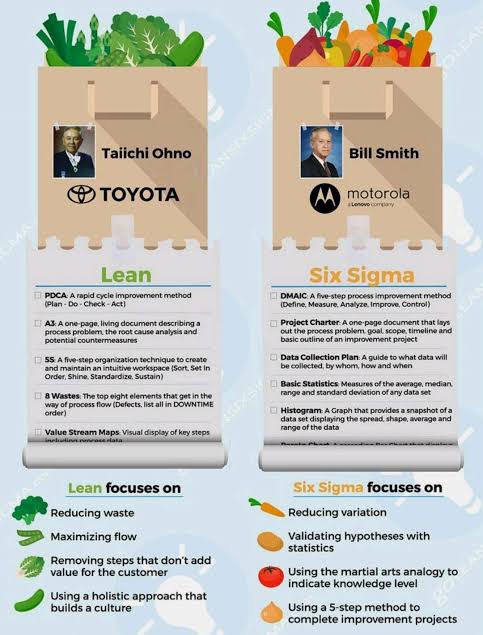Lean and Six Sigma are both popular methodologies used in business management to improve processes, eliminate waste, and enhance quality. Though they share common goals, their approaches and focuses differ significantly:
Lean:
- Principles: It is based on principles such as defining value from the customer’s perspective, mapping the value stream, creating flow, establishing pull, and pursuing perfection.
- Focus: Lean management focuses on eliminating waste to improve efficiency and speed. Waste refers to any activity that consumes resources without adding value to the customer.
- Tools: Tools used in Lean include 5S (Sort, Set in order, Shine, Standardize, Sustain), value stream mapping, Kanban (visual workflow management), and continuous improvement (Kaizen).
- Applications: Lean is versatile and can be applied across various industries including manufacturing, healthcare, and services.
Six Sigma:
- Focus: Six Sigma focuses on improving quality by reducing defects and variability in processes. It aims to make processes more predictable and controlled.
- Principles: It utilizes a data-driven approach and follows the DMAIC (Define, Measure, Analyze, Improve, Control) methodology for existing processes or DMADV (Define, Measure, Analyze, Design, Verify) for creating new products or processes.
- Tools: Tools and techniques include statistical analysis, process mapping, FMEA (Failure Modes and Effects Analysis), and control charts.
- Applications: While it originated in manufacturing, Six Sigma is applicable in any industry where process improvement and quality control are priorities.
Key Differences:
Objective: Lean emphasizes speed and efficiency by reducing waste, while Six Sigma focuses on quality and precision by eliminating defects.Approach: Lean uses a more holistic approach to streamline operations and improve flow, whereas Six Sigma uses statistical methods to identify and reduce variability.Outcome: Although both aim to improve business processes, Lean prioritizes delivering value to the customer through efficiency, and Six Sigma prioritizes delivering consistent, high-quality products or services.
